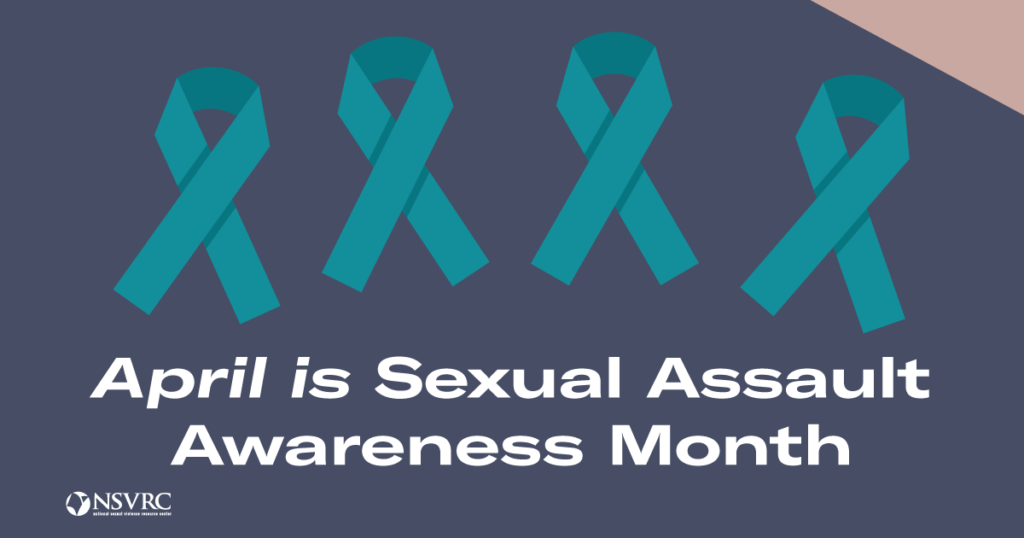In the United States, April is a time to promote awareness about sexual assault and other forms of sexual violence. Sexual violence is a worldwide, pervasive problem that affects every one of us. By raising awareness, we can learn how to cultivate safe workplaces, homes, online platforms and other spaces, to prevent sexual violence and provide support for survivors.
In honor of Sexual Assault Awareness Month (SAAM), here are some of the key facts and figures about sexual violence gathered from the Rape, Abuse & Incest National Network (RAINN). Take a few minutes to read and learn more about this issue as SAAM draws to a close.

What is Sexual Assault?
According to RAINN, sexual assault “refers to sexual content or behavior that occurs without the explicit consent of the victim.” Rape is a type of sexual assault, but sexual assault encompasses other forms of violence as well. Forcing someone to perform a sexual act against their will through emotional coercion or manipulation is also a form of assault.
Sexual Assault is a Pervasive Problem
The Department of Justice’s 2020 National Crime Victimization Survey found that over 800,000 Americans aged 12 and older experienced sexual assault or raped during the years 2015–2019 (1). One statistic from RAINN estimates that a person in the US is sexually assaulted every 68 seconds.
Marginalized Communities are Among the Most Affected
People belonging to marginalized groups, including racial minority, socioeconomic, gender or disabled groups, are more likely to experience sexual assault.
A survey published in 2004 found that American Indians were twice as likely to be sexually assaulted compared to all other racial groups in the US (2). Among college students, transgender, genderqueer or non-conforming, questioning, not-listed (TGQN) students are at greater risk for sexual assault than cis-male and cis-female students (3). Based on a 2010 survey from the Department of Justice, people with disabilities (physical and cognitive) are more than three times as likely to be sexually assaulted and raped than people without disabilities when adjusted by age (4).
Survivors Can Experience Long-Term Traumas
Survivors often experience depression, flashbacks, post-traumatic stress disorder and other long-term physical and psychological traumas. Many people who were sexually assaulted contemplate or commit suicide. Survivors’ personal relationships can also be negatively affected, especially in cases where the survivor knows their assailant.
DNA Forensics and Justice
In cases where survivors consent to a forensic exam, or “rape kit”, crime labs can generate a DNA profile that can help prosecute the attacker. If the genetic profile is added to the national CODIS database, it is also possible to link the attacker to other crimes. However, the national backlog of unprocessed rape kits is immense. New technologies and government policies are helping crime labs process kits faster, and progress is happening. To learn more about the status of this backlog in your state, explore this map from the End The Backlog initiative.
Watch this webinar series to learn more about forensic genomics in assault cases and the rape kit backlog.
RAINN offers secure 24/7 phone and online hotlines if you need support, help or information about sexual violence. For the phone hotline, call 800-656-4673.
Citations
- U.S. Department of Justice, Office of Justice Programs, Bureau of Justice Statistics (2020) Criminal Victimization, 2019. https://bjs.ojp.gov/content/pub/pdf/cv19.pdf
- U.S. Department of Justice, Office of Justice Programs, Bureau of Justice Statistics (2004) American Indians and Crime. https://bjs.ojp.gov/content/pub/pdf/aic02.pdf
- The Association of American Universities (2017) Report of the AAU Campus Climate Survey on Sexual Assault and Sexual Misconduct. https://www.aau.edu/key-issues/aau-climate-survey-sexual-assault-and-sexual-misconduct-2015
- U.S. Department of Justice, Office of Justice Programs, Bureau of Justice Statistics (2011) Crime Against Persons with Disabilities, 2008–2010 – Statistical Tables. https://bjs.ojp.gov/content/pub/pdf/capd10st.pdf
Latest posts by Jordan Nutting (see all)
- The Central Dogma of Promega: The Story and Science Behind Our Kit Packaging Design - May 7, 2024
- Silencing the Immunogenicity of AAV Vectors - April 4, 2024
- Discovering Cyclic Peptides with a “One-Pot” Synthesis and Screening Method - February 29, 2024
